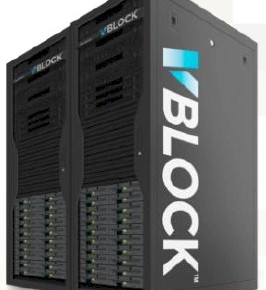Integrated Systems Sales Are Booming, Says IDC

Sales of servers and storage arrays may be looking a bit weak these days, but enterprise customers are starting to invest in integrated systems to boost the performance of their applications and to make their lives easier. And thus, sales of these integrated systems are bucking the trend and booming.
These integrated systems have a lot of different names, but the idea is the same in all of them: Take servers and integrate switching to link to storage and the network, converging it as much as possible, and then add in storage. Then virtualize the components or run on bare metal as conditions dictate. And pick hardware and systems software specifically to accelerate a specific class of workloads. Cisco Systems has partnered with storage vendors EMC and NetApp to create Vblock and FlexPod integrated systems. Hewlett-Packard has its AppSystem and CloudSystem variants of its BladeSystem blade servers. IBM has responded with its PureFlex platform. Dell has taken its blades and converged in switches and storage and management software to create the Active Infrastructure platform. Oracle has its "engineered systems," which include Exadata database, Exalogics middleware, and Exalytics in-memory analytics clusters.
This market is so new that market researchers are only just starting to case it. IDC has just released its dicing and slicing of the integrated systems market, and is in fact tracking it at two levels. The first is for integrated infrastructure systems, which is just for the hardware components, and the second is for integrated platforms, which include systems software adding on top for accelerating specific workloads.
If you just look at the hardware portion, then IDC believes that customers acquired $775.7 million in integrated systems hardware in the second quarter of this year, the most recent statistics it has available. This represented an 80.3 percent growth rate compared to the second quarter of 2012.
"Integrated systems adoption is rapidly moving from evaluation to mainstream use, with customers increasingly deploying Tier 1 applications," explained Jed Scaramella, research director for enterprise servers at IDC. "Progressive companies view integrated systems as a means to optimize their IT environments so IT services can be better leveraged by their business units to increase workforce productivity, drive revenue opportunities, and connect with their customers."
Interestingly, the integrated systems had a total of 529.6 PB of total storage attached to them, which is a 60.5 percent increase in capacity compared to the prior year. That growth in storage is, by the way, nearly three times the growth in storage capacity for the disk array market at large during the same period.
If you add the value of the systems software that is really tied to the integrated systems into the mix, then the market size is almost double, at $1.32 billion. That represents 50.2 percent growth over the prior year, and shows that at this point, the hardware portion of integrated systems is growing faster than the software portion.
Oracle is the market leader in integrated systems when you add in the software, with $305.9 million in revenues in the second quarter. That is an increase of 39.1 percent over Q2 2012, and it gives Oracle a quarter of the market. Cisco and NetApp together have the next biggest slice of the market, with $203.1 million in revenues during the period, up 47.2 percent and growing a bit faster than Oracle. The Virtual Computing Environment partnership between Cisco and EMC ranked third, with $176.1 million in revenues in the second quarter, up 35.2 percent according to IDC's numbers.
All other vendors participating in the market together took in $629.9 million in integrated systems platform sales, rising 62.6 percent. These vendors, including IBM, HP, Dell, Fujitsu, and others, are starting to get traction with the idea among their customers. Cisco and Oracle may have gotten behind the integrated systems idea first, but as is the case with all good ideas, no vendor gets to keep an idea to itself for very long.










